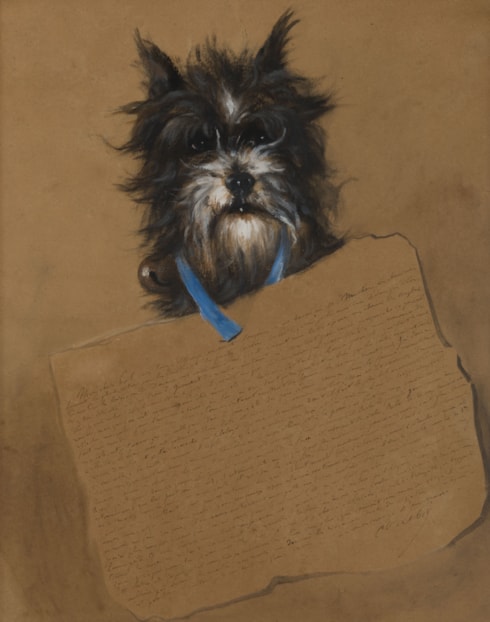
Ludovic-Napoléon LEPIC
Paris 1839 - Paris 1889
Biography
An artist, archaeologist, museum curator and art patron, Count Ludovic Lepic (sometimes Le Pic) was expected to follow his father and grandfather into a military career but was allowed to pursue his desire to be an artist instead. He was trained by the Belgian artists Gustave Wappers and Charles Verlat, who encouraged him to take up etching. By 1861 Lepic was established in a studio at the Louvre, and had begun to work as a printmaker, selling his work through the shop of the print publisher Alfred Cadart. He had a particular interested in expanding the technical possibilities of the etching medium and became the youngest associate member of the Société des Aquafortistes, founded by Cadart in 1862. The following year Lepic entered the studio of Charles Gleyre, where among his fellow pupils were Frédéric Bazille, Claude Monet, Auguste Renoir and Alfred Sisley, and also exhibited for the first time at the Paris Salon. During much of the 1860s Lepic was best known as an animal painter, with a particular penchant for canine subjects, aptly described by one critic as ‘chiens héroiques’. He was also interested in the prehistoric archeology and ethnography of France and established a museum in the spa town of Aix-les-Bains, on the shores of the Lac du Bourget in Savoie, to which he donated artifacts and objects from his archaeological excavations. As an artist, Lepic often worked on the northern coast of France and in Holland, and in the 1870s converted a sailboat into a floating studio, producing numerous paintings of marine subjects. He continued to send paintings, watercolours, gouaches and etchings to the annual Salons, where he won a third-class medal in 1877, and its successor, the Salon of the Société des Artistes Français, until the end of his career. From 1877 onwards he spent several summers in the seaside resort town of Berck-sur-Mer in the Pas-de-Calais, where he painted beach subjects and fishing scenes, often from his boat. In the winter months Lepic would return to his Montmartre studio, where he entertained lavishly and which became a popular meeting place for fellow artists, as well as musicians and writers.
Although only tangentially associated with the artists of the Impressionist movement, Lepic was invited by his friend Edgar Degas to take part in the first Impressionist exhibition in 1874, to which he sent three watercolours and four etchings. He likewise participated in the second Impressionist exhibition two years later, when he showed many more works, including twenty-two paintings and sixteen watercolours, mainly of coastal landscapes and marine subjects, together with a number of etchings. Lepic and Degas had been friends since youth, having met sometime in the late 1850s, and often visited the Opéra and the races at Longchamp together. Both were members of the Parisian club Le Cercle de l’Union Artistique (or ‘Les Mirlitons’), and Lepic appears in eleven works by Degas, most notably in the painting Place de la Concorde (Vicomte Lepic and his Daughters crossing Place de la Concorde), painted in 1875 and today in the Hermitage in St. Petersburg. (Lepic was also the subject of a portrait etching by another friend, the artist Marcellin Desboutin, which was shown at the Salon of 1876). Lepic seems to have been influential in persuading Degas to take up the practice of monotype printmaking, and in 1876 the two collaborated on what was to be Degas’s first monotype, a ballet scene which was signed by both artists.
In 1879 Lepic has his first solo exhibition at the offices of the weekly illustrated magazine La Vie Moderne in Paris, followed in 1881 by a second show that included around a hundred works. The same year he was appointed painter to the Ministry of the Marine, under whose auspices he was sent on a scientific expedition to Egypt. In 1883 Lepic’s oeuvre was the subject of a large retrospective exhibition, numbering over three hundred works, at the Musée des Arts Décoratifs in Paris, where they were shown alongside a large number of works by James Tissot. An occasional sculptor, Lepic also produced a number of costume designs for the Paris Opéra as well as designs for a porcelain dinner service that was exhibited at the Exposition Universelle in 1889, the year of the artist’s death at the age of fifty.


